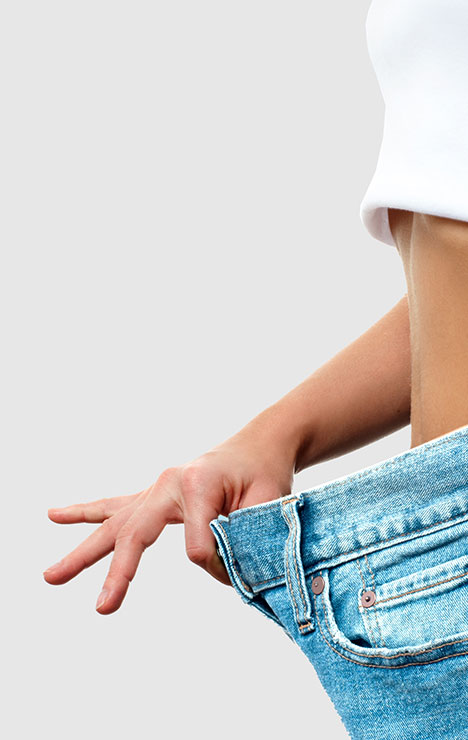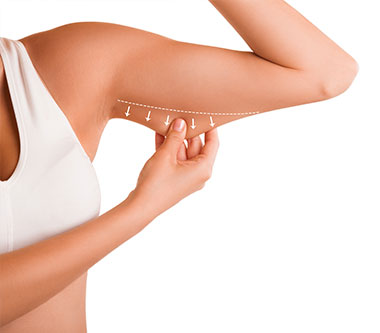The recovery period will differ for each patient, and healing is a gradual process. It’s generally recommend that you start walking around as soon as possible to reduce swelling and to help prevent the development of blood clots. Most patients begin to feel better after about a week or two, and you should be able to resume work within a few days following your liposuction. Within the first week to 10 days, the stitches will be removed or they’ll dissolve on their own, depending on the type. Strenuous activity should be avoided for the first few weeks. Although most of the bruising and swelling usually disappears within three weeks, some swelling may remain for six months or more.
Liposuction
Sculpt Your Body To Get
The Results You’ve Always Wanted
Even with exercise and a proper diet, sometimes, stubborn pockets of body fat refuse to leave. Liposuction helps sculpt the body by removing unwanted pockets of fat from specific areas, including the abdomen, hips, buttocks, thighs, knees, upper arms, chin, cheeks, and neck.
Good candidates for liposuction are close to their ideal weight with firm, elastic skin, and are unhappy with areas of excess fat. Likewise, candidates should be physically and psychologically healthy.
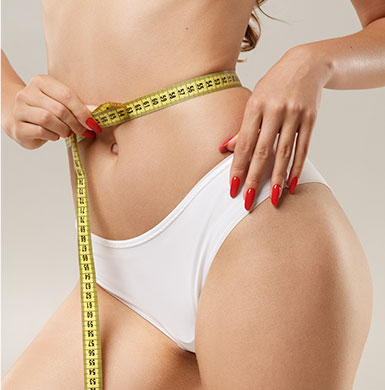
Benefits of Liposuction


By. Dr. Albertine
In recent years, liposuction has undergone many advancements, giving patients more options to suit their cosmetic goals. Although liposuction isn’t a substitute for a proper diet and exercise, it can remove stubborn areas of fat that don’t respond to traditional weight-loss methods.
- Improves overall health
- Gives a more defined shape
- Improves mobility
- Reduces blood fat levels
- Finally reach your ideal weight
- Boosts your confidence and self image
Why Choose Sculpt
Through years of education, rigorous surgical training, and experience, Dr. Albertine Marchadier has developed a keen sense of surgical judgment that allows herto prevent problems during surgery, and to appropriately treat complications in the rare event they occur.
She is is committed to the highest degree of care and treatment, from your initial consultation to your post-operative appointments.


By. Dr. Albertine
Dr. Albertine Marchadier
About Our Specialist

Dr. Albertine Marchadier has over 19 years of experience as an internationally recognized expert in Plastic and Aesthetic Surgery as well as reconstructive Surgery.
She is currently appointed as the Vice-director at the Euro-Mediterranean Institute of Aesthetic and Plastic Surgery and is a member of the French Society of Plastic, Aesthetic and Reconstructive Surgery, SOFCPRE.

Get Treated By France’s
#1 Cosmetic Surgeon
With a D.E.S.C. of Plastic, Cosmetic and Reconstructive Surgery, Dr. Albertine Marchadier specialized in female plastic & cosmetic surgery (breast, body and intimate).
- After Care
- Pre-Operation Instructions
- Post-Operation Instructions

After Care
- Take the prescribed medication to help ease any discomfort.
- You may have bandages under your compression garment. Your doctor will tell you when to remove the bandages and just use the compression garment.
- Don’t shower or wet your bandage for the first 48 hours after surgery.
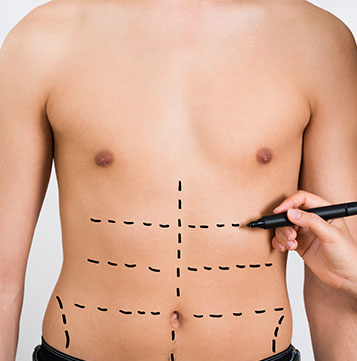
Pre-Operation Instructions
- Avoid taking aspirin, anti-inflammatory drugs, and herbal supplements, as they can increase bleeding.
- Purchase your supportive garment
- Wash the surgical areas daily with an antibacterial soap starting 3 days prior to the surgery

Post-Operation Instructions
- avoid exercise and strenuous activity for about four to six weeks
- Arrange to have someone drive you to and from surgery.
- Do not drink or smoke as it increases the risk of complications.
Frequently Asked Questions
-
What is recovery like?
-
Are the results permanent?
When you gain weight, fat cells increase in size and volume. In turn, liposuction reduces the number of fat cells in a specific area. The amount of fat removed depends on the appearance of the area and the volume of fat. The resulting contour changes are generally permanent — as long as your weight remains stable.
-
Are there risks with liposuction?
As with any major surgery, liposuction carries risks, such as bleeding and a reaction to anaesthesia. Other possible complications specific to liposuction include: fluid accumulation (temporary pockets of fluid (seromas) can form under the skin), numbness and infection.
-
How long does the procedure take?
Depending on the area you're having treated and how much fat you're having removed, your procedure can take between one and three hours to complete. However, this is only the time for the actual surgical procedure. The preoperative and post-operative procedures will extend your time in the clinic to a full day.
-
How does the procedure work?
In liposuction, a cannula is connected to a vacuum to remove the fat from your body. The treatment may involve one of these techniques such as tumescent liposuction, ultrasound assisted liposuction (UAL) or laser-assisted liposuction.
-
Is having liposuction painful?
Any residual pain should disappear within a few days. Liposuction recovery involves minimal pain, but any excess pain can be managed with over the counter painkillers. You will be issued with a compression garment to reduce the swelling, and this should be worn for 6 weeks.
The recovery period will differ for each patient, and healing is a gradual process. It’s generally recommend that you start walking around as soon as possible to reduce swelling and to help prevent the development of blood clots. Most patients begin to feel better after about a week or two, and you should be able to resume work within a few days following your liposuction. Within the first week to 10 days, the stitches will be removed or they’ll dissolve on their own, depending on the type. Strenuous activity should be avoided for the first few weeks. Although most of the bruising and swelling usually disappears within three weeks, some swelling may remain for six months or more.
When you gain weight, fat cells increase in size and volume. In turn, liposuction reduces the number of fat cells in a specific area. The amount of fat removed depends on the appearance of the area and the volume of fat. The resulting contour changes are generally permanent — as long as your weight remains stable.
As with any major surgery, liposuction carries risks, such as bleeding and a reaction to anaesthesia. Other possible complications specific to liposuction include: fluid accumulation (temporary pockets of fluid (seromas) can form under the skin), numbness and infection.
Depending on the area you're having treated and how much fat you're having removed, your procedure can take between one and three hours to complete. However, this is only the time for the actual surgical procedure. The preoperative and post-operative procedures will extend your time in the clinic to a full day.
In liposuction, a cannula is connected to a vacuum to remove the fat from your body. The treatment may involve one of these techniques such as tumescent liposuction, ultrasound assisted liposuction (UAL) or laser-assisted liposuction.
Any residual pain should disappear within a few days. Liposuction recovery involves minimal pain, but any excess pain can be managed with over the counter painkillers. You will be issued with a compression garment to reduce the swelling, and this should be worn for 6 weeks.
Testimonials
What Our Patients Say About Us!
-
“I had liposuction done on my mid/upper back and abdomen and I couldn’t be more pleased with my results. Dr Albertine made me feel so relaxed from the start. She took the time to listen to my concerns and delivered amazing results.”
Hamad . A
-
"I feel so much happier and healthier with my body after having Liposuction. I am so happy that I was in the safe hands of Dr. Albertine and her friendly, caring, and compassionate team. I had a great experience and would definitely recommend Dr Albertine."
Ms Ruby F


